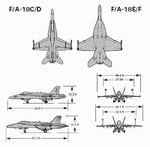Butters
Senior Airman
Ok, I have to laugh - good find Butters but some of the comments posted from that article sum it up...
"As presented, it looks like FY2008 $/flying hours are compared to dollars in the 2020s. 40% higher would be the same as less than 2% annual inflation over 20 years."
"OK, blowing up the teeny-weeny slide.... I see that TOC 'claimed' includes adjustment for inflation and indirect cost increases, This leaves direct cost increases unrelated to inflation. What is the cost of fuel estimate in the far future?
The real question is how does this compare to the TOC of keeping the F-18 alive and effective through 2029?
Apples and apples are needed. This slide is apples and oranges."
I bet David E. Burgess never turned a wrench or managed a NAVAIR budget.
Well, it you feel that those commenters are more credible than the USN's own cost manager, that's up to you. Interestingly enough, LM's Crowley pooh-pohed it as being no more credible than the JET report. Who was right in that case...?
All our LM differences aside, what did you think of the paper on AC prices?
BTW, here's the NAVAIR report:
http://startelegram.typepad.com/files/navy-don_f-35_total-cost-of-ownership_04jan10.pdf
JL

